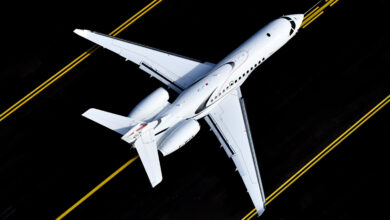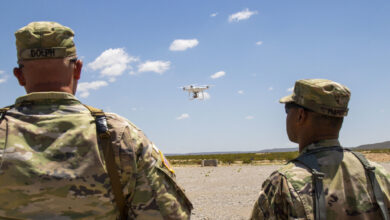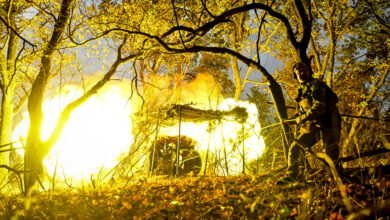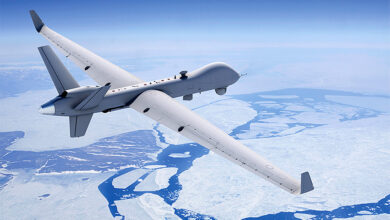Drone manufacturer Parrot signed a 5-year contract with French defense procurement agency DGA to supply the French Army with 300 of its ANAFI USA micro-drones.
The Paris-based company will equip the “three corps” of the French Army (Air, Sea, and Land) following the latter’s call for tenders in February last year.
The contract covers “several hundred drones, the development of adaptations, and the maintenance of equipment and software,” with the first systems to be delivered in June this year. The agreement also includes training of remote pilots and first-time users.
“In today’s world, Parrot is convinced that it is key for security forces, and armies, to rely on powerful, high-tech consumer equipment that is highly secure,” Parrot Chairman and CEO Henri Seydoux said.
Le ministère des Armées commande 300 micro-drones de reconnaissance et de renseignement à la société @Parrot.
▶️ Ces micro-drones équiperont les 3 armées
▶️ Premières livraisons attendues en juin 2021
▶️ Commandes assurées par la @DGA#NotreDéfense pic.twitter.com/XpkKQ1KINA— Ministère des Armées 🇫🇷 (@Armees_Gouv) January 12, 2021
ANAFI USA Micro-Drones
The company said that ANAFI USA micro-drones satisfy DGA’s requirements in terms of security and the drones can meet “the most stringent cybersecurity standards.”
The product has strong security in connection, data, and firmware and can protect itself against “malicious attempts to modify the drone’s software.”
To enable access to the local market, the micro-drones are entirely developed in France and produced in the United States. No essential components are produced in China.
In addition, Parrot claims that the micro-drones will improve the reconnaissance capabilities of the French Army. They weigh only 500 grams, are built with “day and night observation capabilities,” and can fly up to 32 minutes.
Using two 4K 21-megapixel cameras, the vehicles can zoom up to 32x and allow for the detection of person-sized targets up to 2 kilometers (1.2 miles) away with a detail accuracy of 13 centimeters (0.3 inches). The drones are also discreet: they have a sound signature of 79 decibels (comparable to the sound of a vacuum cleaner) at a distance of 1 meter (3.2 feet), while they are inaudible from 130 meters (426 feet).
History of France’s Drone Use
In December 2019, France launched its first drone attack in Mali and was reported at the time to be the latest country to use unmanned combat drones.
The country joined a small number of governments using the vehicles beyond their borders in an attempt to “neutralize” Malian Islamic extremists a few weeks after 31 of its troops had been killed in an operation.
Since 2014, France has been using drones to provide surveillance support to the Barkhane mission in Niger, Mali, and Burkina Faso. By 2019, these drones had been fitted with laser-guided missiles to be able to strike targets.
A debate concerning lethal autonomous weapon systems has been ongoing at the UN since 2014, with 97 countries expressing “a wide array of serious ethical, legal, operational, proliferation, moral, and technological concerns” over removing human control from the use of force. The talks produced few results and ended in a stalemate.
Around the world, around 100 countries are believed to possess combat drones, with the US, China, and Turkey actively exporting military drones abroad.












